Take a Rare Tour of François Catroux’s Private Provençal Retreat

- Oops!Something went wrong.Please try again later.
Editor’s Note: The legendary French interior designer François Catroux passed away this weekend. ELLE Decor published this feature about his home in Provence in our September 2017 issue.
Escapes are essential—to repair, rejuvenate, or simply relax. For French designer François Catroux and his wife of 50 years, former Yves Saint Laurent muse Betty Catroux, those moments come on weekends from Easter to late October at Les Ramades, their 16th-century stone house outside of Lourmarin, a village in Provence’s Luberon region. François leaves his latest projects—such as Barry Diller and Diane von Furstenberg’s estate in Connecticut or Princess Marie-Chantal of Greece’s townhouse on Manhattan’s Upper East Side—at his Paris office, jumps on a high-speed train with Betty, and heads south for a couple of days of “complete far niente,” as he puts it. “I drink rosé and gaze at the beauty,” Betty says. And François? “I dream.”
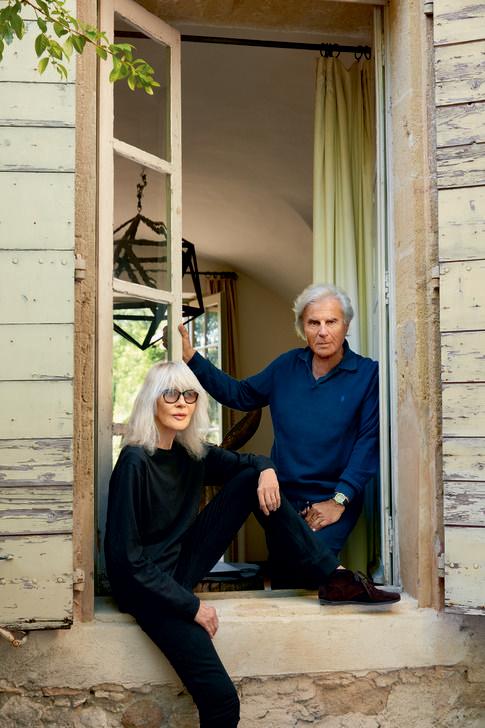
It’s easy to see why. Set on 10 acres—half of which is a traditional Provençal garden, with a pool where Betty swims and a tennis court where the couple’s grown children and grandchildren play—Les Ramades is as romantic as it is restful. François bought it in 1990, when it was a ruin with dirt floors, from three old French sisters whose greatest contribution to it was the addition of two somewhat modern bathrooms. “Given that my métier is designing homes, it didn’t interest me to buy something already done,” he explains. The house, he says, is “not a farm and not a manor, but rather something particular to the south of France.” Over the years, he’s heard that it was once a convent, and also that it belonged to a wealthy family—as evidenced by the multiple layers of génoises, red tile eaves. “A normal person would have one layer, a wealthy person two,” he says. “Ours has three, so we assume it belonged to someone important.”
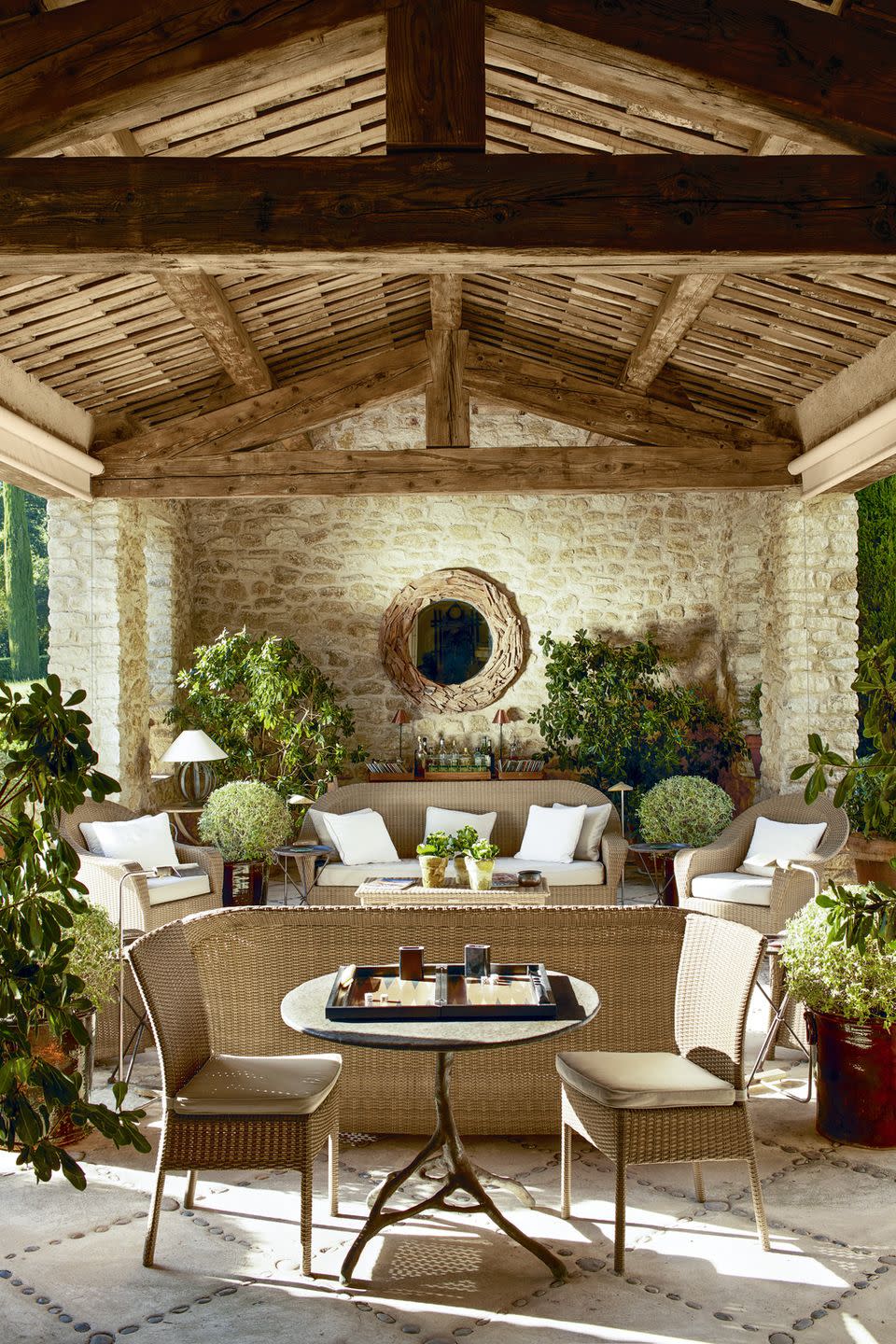
What charmed François most about the architecture of Les Ramades were the vaulted ceilings and the interior courtyard. “Lourmarin was in the center of the war between Protestants and Catholics,” he points out. “Everything was fortified and had central courtyards where the residents could protect themselves.” The inner courtyard also recalls the traditional riad-style homes of French-colonial Algeria, where François grew up as the son of “grand bourgeois” landowners and was the schoolmate of couturier Yves Saint Laurent. It was Betty who brought them back together as adults. “I met both more or less at the same time in nightclubs,” she says. “My life is a fairy tale because of them.” The trio’s friendship remained tight until Saint Laurent’s death in 2008.
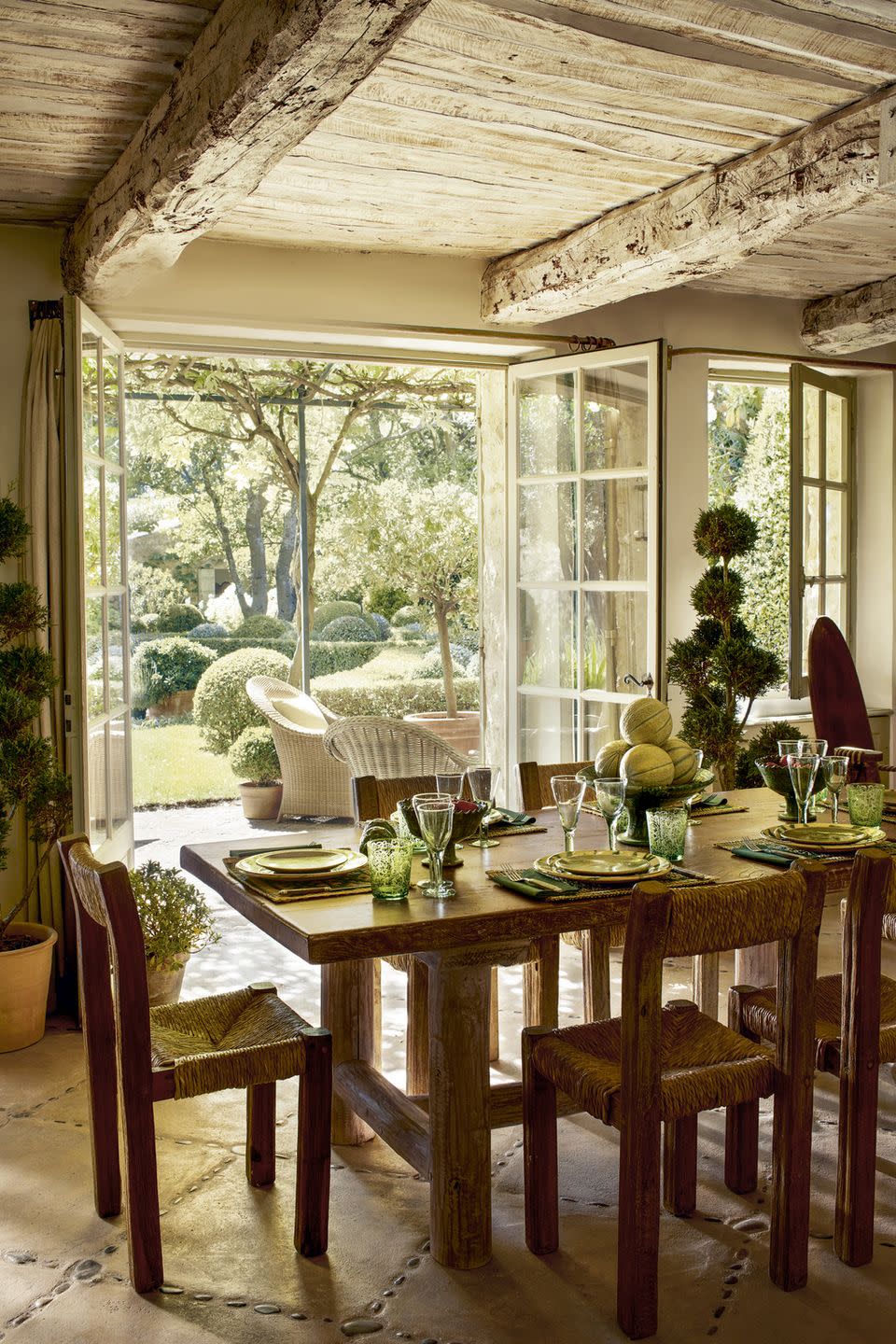
The decor François does for his clients could be called high 1970s decadence, heavy with important art and rich materials, but here he has kept things light and casual. The palette is stone gray and garden green, linking the interiors to the nature outside. He put down a local flooring, called calade, made of river stones embedded in smooth cement. “If you squint, it’s like a Moroccan rug that travels through the house,” he explains in his monograph, François Catroux, published in 2016 by Rizzoli.
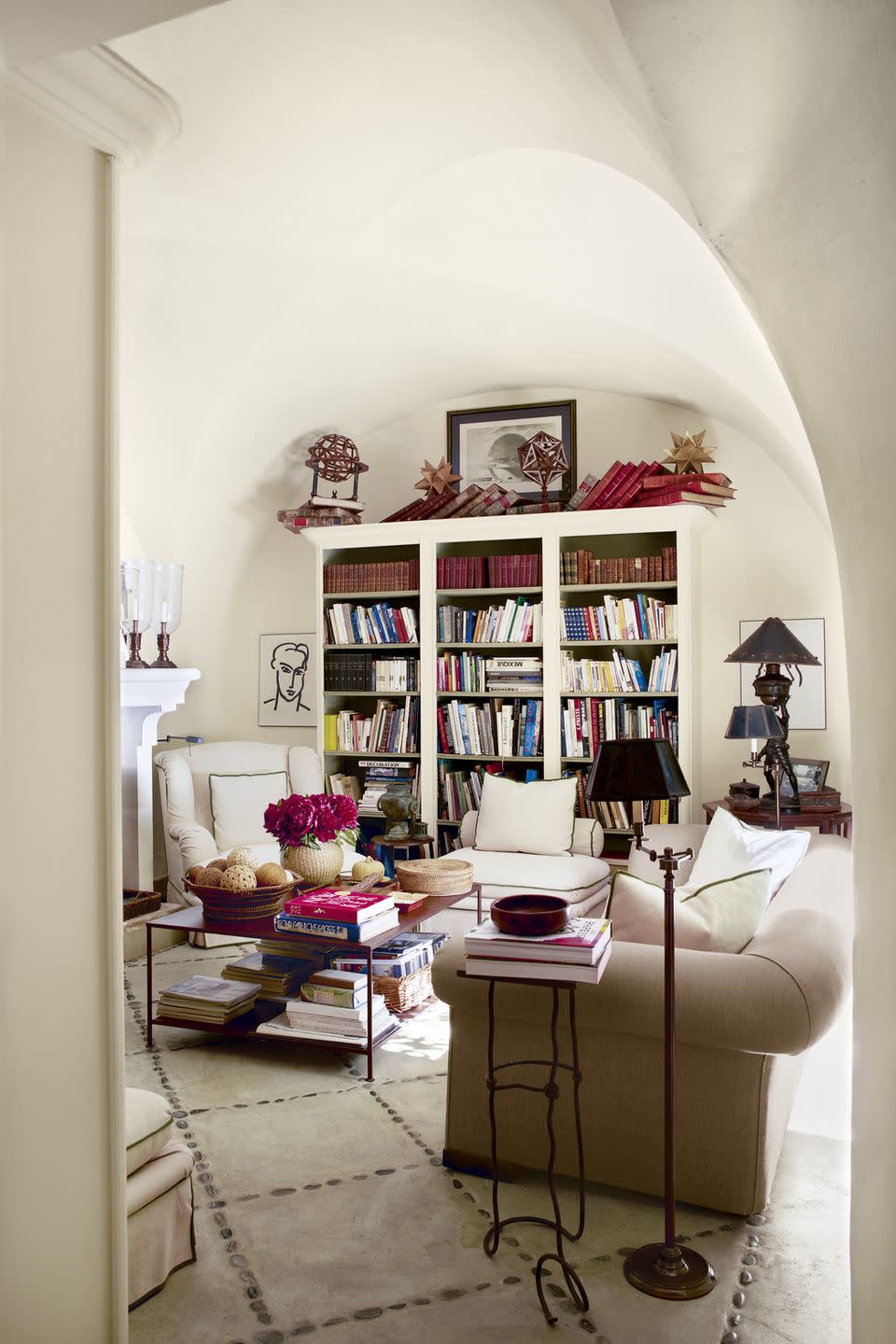
There are a few monumental pieces, such as the polyhedron pendant in the living room, which he designed and had made out of oak, and a pair of exotic wood screens, which he first spotted decorating the windows of the Cerruti boutique on the Place de la Madeleine in Paris and negotiated to buy.
Otherwise, it’s comfortable, with a mix of important designs such as a 1930s prototype of a chair by Axel Einar Hjorth; flea-market finds like the mirrors he had made from tractor wheels; and common commercial items, like a Crate & Barrel sunburst mirror in the guest bedroom. On the walls of the small primary bedroom is a series of collages by Saint Laurent. “Yves gave me everything: his love, his clothes, his jewelry, part of his life, and his art,” Betty says. “When he got inspired, he would write or draw or paint, and he gave what he created to me.”
Several years ago, François added an outdoor living room and dining room, semi-open spaces that are oriented to block the powerful mistral wind. The outdoor dining room’s clay tile roof is supported by massive columns François had copied from the nearby medieval Château d’Ansouis. On the patio of the outdoor living room, he placed an old stone horse trough that he converted into a fountain, making the area that much more serene. “This room has changed my life,” he says.
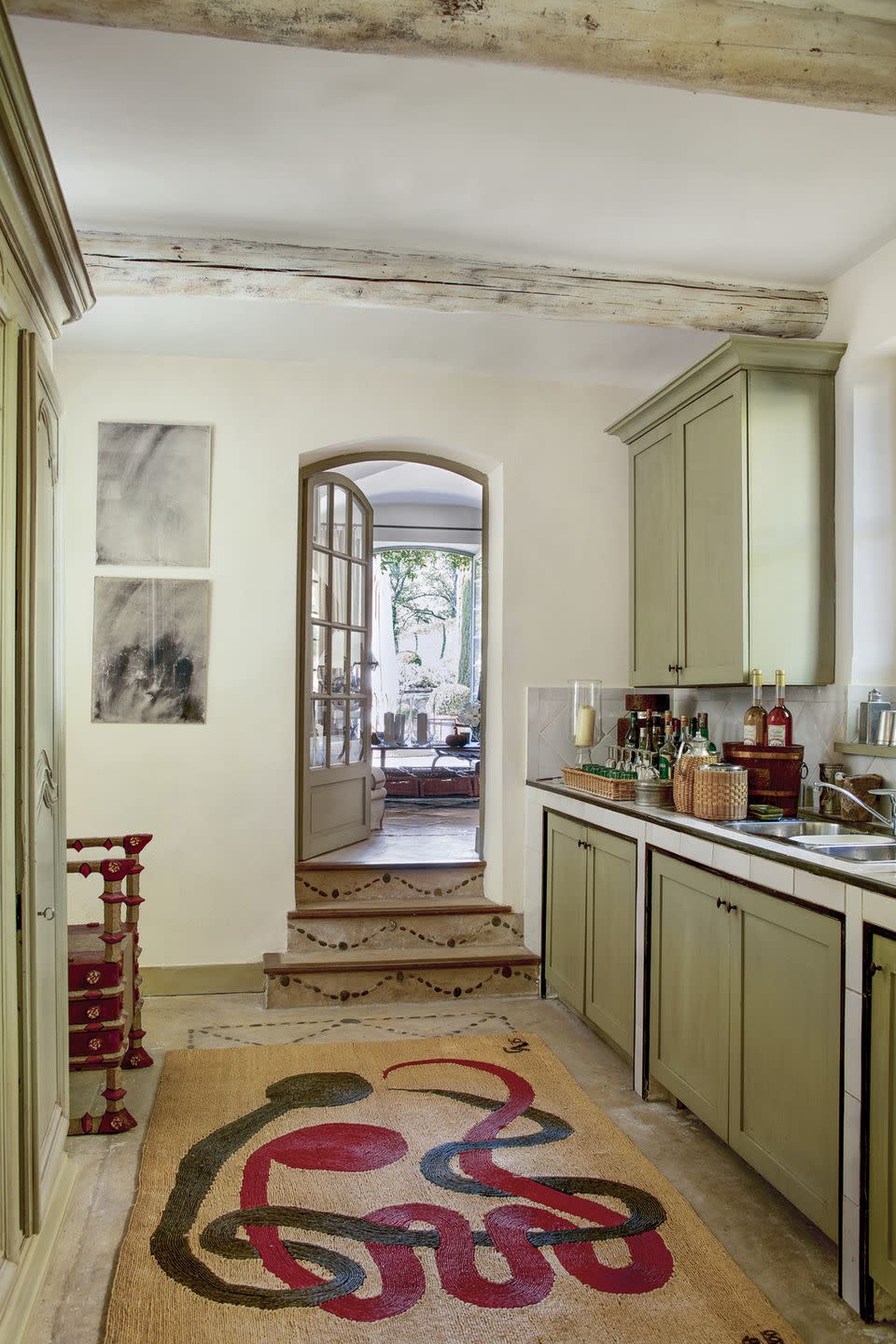
Twice each season, the couple invite a pack of friends and the house fills with noise and activity. On occasion they receive intimates such as former Yves Saint Laurent CEO Pierre Bergé, who has a home in nearby Saint-Rémy-de-Provence, for a Provençal dinner. Otherwise, the pair remains alone, each relishing the other’s company. “I’m like a guest in my house,” Betty says. “It’s all François’s doing, you know. I live with a genius. I’m the luckiest girl in the world.”
This story originally appeared in the September 2017 issue of ELLE Decor. SUBSCRIBE
You Might Also Like

